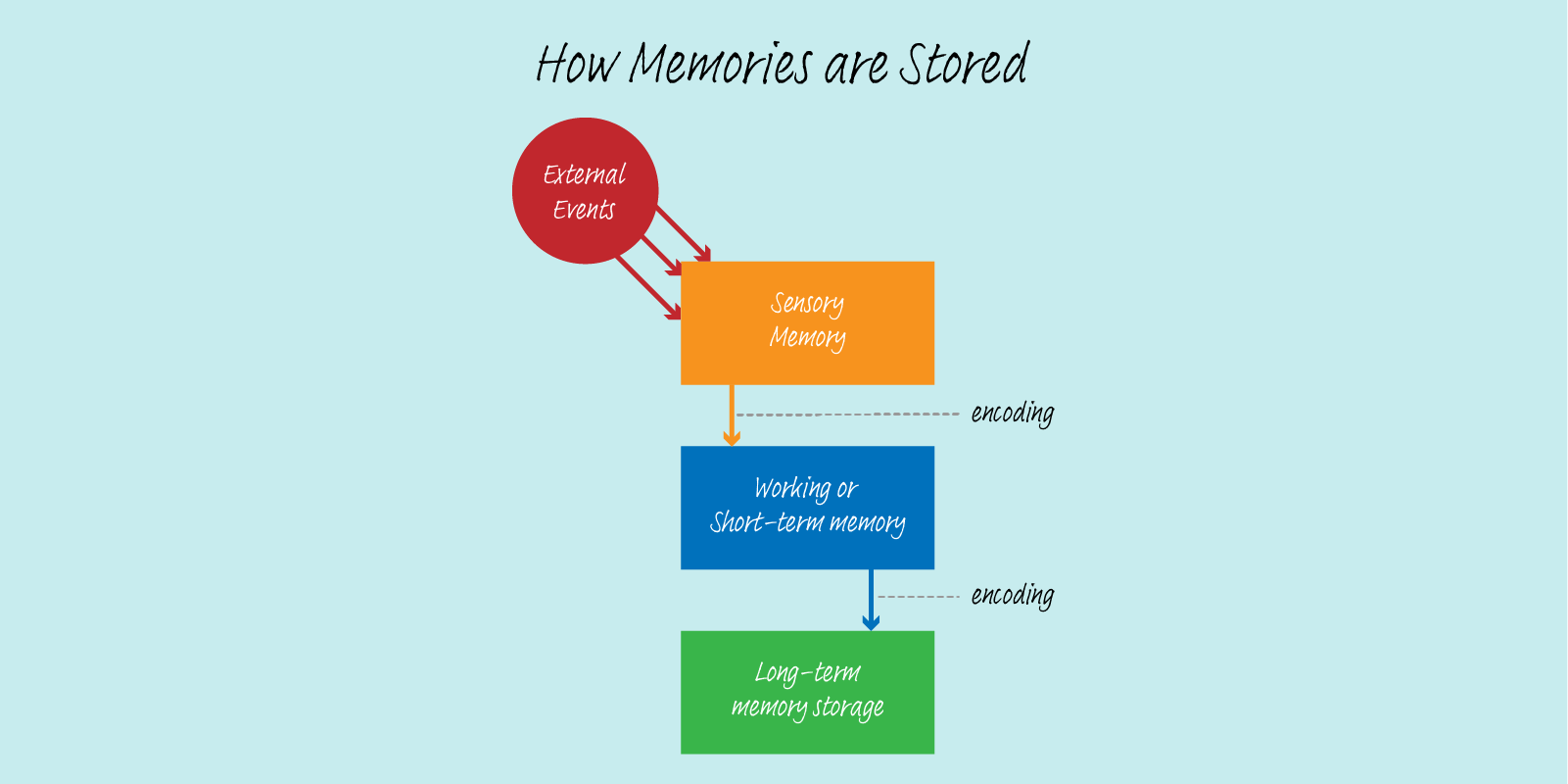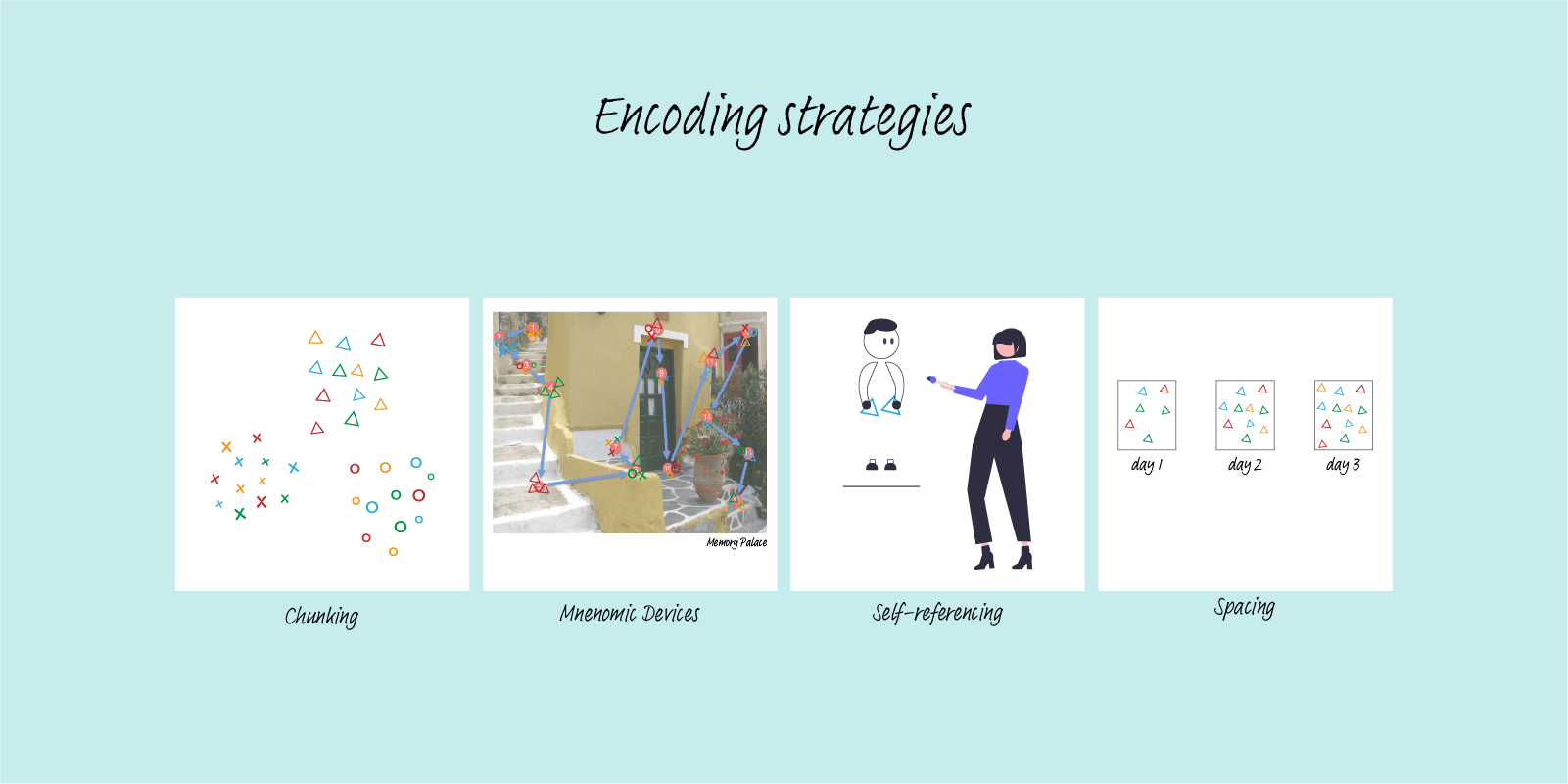You probably can't remember anything today if you read a book or studied the previous week. Unless, of course, you put in real effort. And I mean serious effort. You might remember some of the big ideas. But often forgot the specific. However, sometimes you actually need to remember the specific. Sure, you can reread the book. Repetition is one of the keys to effective learning. But what if you could learn something faster and with less boring repetition? That's where encoding comes in.
To learn anything, we need to encode information into our brains. But what does that actually mean though? And how can encoding help us succeed in learning? In this blog post, I'll explore the different ways encoding can help us learn and retain information. But first, let's talk about how our memory is stored.
How Memory is Stored
The human mind is complex. The most influential model on how we actually store information treats our mind as an information-processing system similar to computers. We get input from the environment, process it, and output decisions.

The stages of information processing according to this model consists of three parts:
- Sensory memory. Any new input occurs in this memory. This is where we interact with our environment. It is a temporary register of all the information your senses are taking in.
- Working memory. It is just whatever you are thinking about right at this moment. It is also called short-term memory. Working memory can hold about seven plus or minus two pieces of information at a time, so about five to nine.
- Long-term memory is the final stage in the information processing model. We can store a lot of information in long-term memory.
So what does encoding have to do with all of this?
What is Encoding
Encoding is about moving information. Moving information from a temporary store into your working memory. And moving that into the permanent store in your long-term memory. It is the process in which data is processed and categorized for storage and retrieval. It is how information from sensory input is changed into a form so it can be stored in the brain. It transforms internal thoughts and external events into working memory and long-term memory.
Encoding is vital because if you encode information well, it is much easier to retrieve it later. Okay, great. But how do I use this knowledge to remember information better?
Encoding Strategies

There is a lot of encoding strategy. However, all successful encoding requires you to tie any new information with old information you already have in your head. This article outlines the most essential strategies. Remember, to be successful, use what you already know to help you encode the new information.
Chunking
Chunking is grouping information into groups or categories. For example, if I ask you to remember a shopping list that contains: mangos, oranges, grapes, bread, rice, beef, almonds, flour, eggs, and butter. It will be difficult for you to remember them all as is. But if you group them into categories, it will be much easier to remember. For instance, you can group mangos, oranges, and grapes into the fruit category. Bread and rice into carbs. Beef and almonds into proteins. Flour, eggs, and butter into the baking item's category. This is much easier to remember.
You can change the category in whatever way that makes sense to you. It is definitely okay to chunk those items differently. As long as they make sense to you.
Mnemonic Devices
Mnemonic devices are a set of tools to help you remember stuff. There are many mnemonic devices. The first thing you learn in school is probably the use of acronyms. Acronyms make remembering stuff super easy. For example, I am not from the US, but I remember the US Great Lakes because the acronym is so easy. HOMES: Huron, Ontario, Michigan, Erie, Superior.
Other effective devices involve memory palace, peg system, visual alphabet, etc. You can read the Memory Craft by Lynne Kelly to learn more about memory techniques. Or you can visit the artofmemory.com wiki website. They have an extensive list of mnemonic devices.
Self-referencing
Self-referencing is to look at a piece of information and think about how you relate to that information personally. You can use it to imagine the information. For instance, if you are learning about the history of a Chinese emperor, you can imagine being the emperor himself. Live the experience, and you will remember more.
Another typical way to use this technique is to prepare the material as if you are going to teach them. Writing a blog post elaborating on the topic also works.
Spacing
Spacing is not precisely an encoding technique. It is a meta-strategy. While other methods point to what you should do during the learning process. Spacing is a strategy for how you should structure your learning session.
The point of this technique is to space your study session apart. Learning for one hour every day is much better than learning five hours in a single day. Spacing your study apart has been proven to help you learn more information and retain it longer.
Endnote
Converting information into a code that your brain can easily remember makes learning faster and more efficient. So why not give it a try? The next time you're studying for an exam or trying to learn a new skill, use some encoding techniques to help get the job done. You may be surprised at just how effective they can be!


